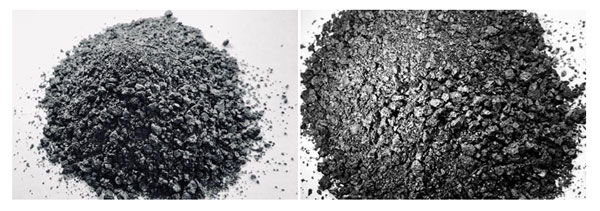
Graphite petroleum coke, or GPC, is a feedstock for carbon nanomaterials. Its uses are varied and include steel-making, graphite precursors, carbon nanotubes, and carbon nanowires. This finite resource is used extensively in many industries. But is it worth the price tag? And why is the future of graphite in doubt? Let's find out. Here are some reasons why graphite petroleum coke is important.
Needle coke is a coal-tar distillate that is low in carbon content. Its properties are dependent on the carbon feedstock and the process parameters used in the manufacturing process. A typical coke is classified according to its CTE (carbon to energy) over a given temperature range. This is the basis for determining its CTE value, which is crucial in graphite production. A process for making needle coke has several advantages.
One of its primary applications is in the production of graphite electrodes. The steel industry uses needle coke as a precursor to create graphite. Moreover, the growing demand for lithium-ion batteries is expected to drive the market growth in the near future. A high proportion of the global market for graphite electrodes comes from the automotive sector. However, there are a number of factors that could impact the demand for needle coke.

Graphite is an excellent starting material for the manufacture of carbon nanomaterials. Petroleum coke is a solid by-product of oil refining, which is typically used for heating or as an anode in the production of aluminum and steel. However, it is difficult to extract graphene from natural graphite because it is contaminated with metals and silicate minerals. To overcome these challenges, researchers studied the chemical processes that would enable the production of graphene from petroleum coke.
Graphite petroleum coke is able to produce high-quality carbon nanomaterials, which are highly conductive and have a high friction coefficient. The amount of impurities in coke is dependent on its purity, but the end product still resembles flake graphite. In addition, the final product retains the macromorphology of the original coke, but has a more concentric morphology, which is the characteristic of flake graphite.
Graphite Petroleum Coke (GPC) is an important ingredient for the steel-making process. It is a gray-to-black solid carbonaceous residue that can be heated to nearly five thousand degrees Fahrenheit. This carbon is found in two natural crystalline forms: diamond and graphite. Both are excellent conductors of heat and electricity and are stable over a wide temperature range. Graphite can also be used in the plastics and rubber industries.
The production of petroleum coke has many uses. It is used to make electrodes for the steel industry and in the aluminum industry. It can also be used as fuel in solid fuel boilers. Fuel-grade coke is less expensive than other types of coke, and it has low ash content. Graphite is a great material for steel-making electrodes because it is low in ash.
Graphite petroleum coke is granular coal produced during the refining of crude oil. This process is not new, but the first modern coker was put into operation in the U.S. in the 1930s. Coking technology is now used in over half of the U.S. petroleum refineries. Recent refinery upgrades have boosted the use of coking technology to process heavy crude from oil sands projects in Canada. There are large piles of petcoke in urban settings, and proposals for new pipelines suggest a rise in rail deliveries of heavy crude.
The yield of graphene produced from coke was measured using UV-vis absorbance spectrometry. The extinction coefficient was set at 1293 L/g/m33. The product dispersion exhibited a peak of approximately 666 nm, which is consistent with the level of oxidation. An example spectrum is provided in Supplementary Fig. 20. Graphite petroleum coke is a finite resource

Write a Message